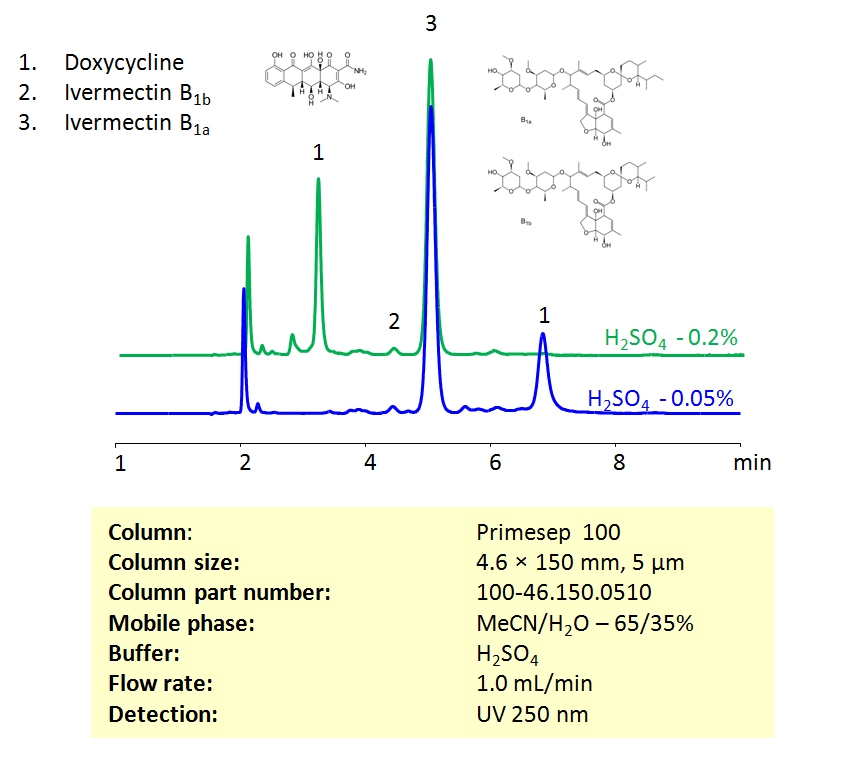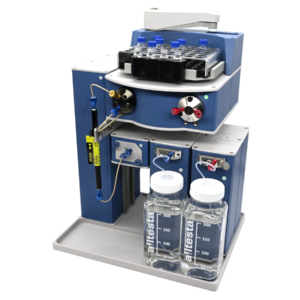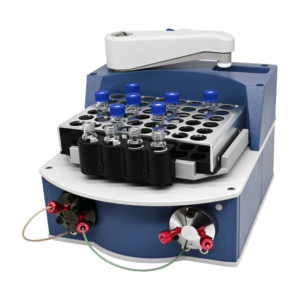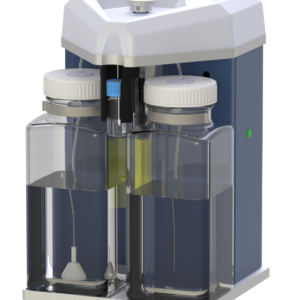HPLC Method for Ivermectin B1a, Doxycycline, Ivermectin B1b on Primesep 100 by SIELC Technologies
High Performance Liquid Chromatography (HPLC) Method for Analysis of Ivermectin and Doxycycline
Ivermectin is an anti-parasitic drug. 1A variation has the chemical formula C48H74O14. 1b has the chemical formula C47H72O14. It is often used to treat or prevent parasites in animals and humans. In dogs, it is routinely used to treat heartworm, though, certain breeds, can be severely poisoned by this medication. You can find detailed UV spectra of Ivermectin B1a and information about its various lambda maxima by visiting the following link.
Doxycycline is a broad spectrum antibiotic with the chemical formula C22H24N2O8. Outside of being an antibiotic, it is also said o have anti-inflammatory and anti-angiogenic properties. It is used primarily to treat Lyme disease. chronic prostatitis, sinusitis, pelvic inflammatory disease, acne, rosacea, and rickettsia. You can find detailed UV spectra of Doxycycline and information about its various lambda maxima by visiting the following link.
Ivermectin and Doxycycline can be retained and separated on the Primesep 100 mixed-mode column using an isocratic analytical method with a simple mobile phase of water, acetonitrile (MeCN, ACN), and sulphuric acid (H2SO4) buffer. The analysis method can be UV detected at 250 nm.
| Column | Primesep 100, 4.6 x 150 mm, 5 µm, 100 A, dual ended |
| Mobile Phase | MeCN/H2O – 65/35% |
| Buffer | H2SO4 |
| Flow Rate | 1.0 ml/min |
| Detection | UV, 250 nm |
| Class of Compounds |
Drug, Antibiotics |
| Analyzing Compounds | Ivermectin B1a, Doxycycline, Ivermectin B1b |
Application Column
Primesep 100
Column Diameter: 4.6 mm
Column Length: 150 mm
Particle Size: 5 µm
Pore Size: 100 A
Column options: dual ended
Ivermectin B1a
Ivermectin B1b






